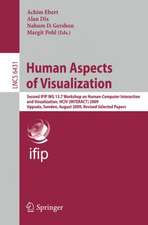Computable Analysis: An Introduction: Texts in Theoretical Computer Science. An EATCS Series
Autor Klaus Weihrauchen Limba Engleză Hardback – 14 sep 2000
| Toate formatele și edițiile | Preț | Express |
|---|---|---|
| Paperback (1) | 332.89 lei 6-8 săpt. | |
| Springer Berlin, Heidelberg – 20 noi 2013 | 332.89 lei 6-8 săpt. | |
| Hardback (1) | 339.14 lei 6-8 săpt. | |
| Springer Berlin, Heidelberg – 14 sep 2000 | 339.14 lei 6-8 săpt. |
Din seria Texts in Theoretical Computer Science. An EATCS Series
- 20%
 Preț: 319.34 lei
Preț: 319.34 lei - 20%
 Preț: 341.30 lei
Preț: 341.30 lei - 20%
 Preț: 199.04 lei
Preț: 199.04 lei - 20%
 Preț: 430.64 lei
Preț: 430.64 lei -
 Preț: 383.93 lei
Preț: 383.93 lei - 20%
 Preț: 345.26 lei
Preț: 345.26 lei - 20%
 Preț: 599.76 lei
Preț: 599.76 lei - 20%
 Preț: 332.06 lei
Preț: 332.06 lei -
 Preț: 465.70 lei
Preț: 465.70 lei - 20%
 Preț: 727.14 lei
Preț: 727.14 lei - 15%
 Preț: 591.28 lei
Preț: 591.28 lei -
 Preț: 399.50 lei
Preț: 399.50 lei - 20%
 Preț: 362.57 lei
Preț: 362.57 lei - 20%
 Preț: 332.06 lei
Preț: 332.06 lei - 20%
 Preț: 999.85 lei
Preț: 999.85 lei - 20%
 Preț: 601.92 lei
Preț: 601.92 lei - 20%
 Preț: 341.63 lei
Preț: 341.63 lei - 20%
 Preț: 354.71 lei
Preț: 354.71 lei - 20%
 Preț: 644.95 lei
Preț: 644.95 lei - 20%
 Preț: 655.83 lei
Preț: 655.83 lei -
 Preț: 394.29 lei
Preț: 394.29 lei - 15%
 Preț: 712.54 lei
Preț: 712.54 lei - 20%
 Preț: 588.86 lei
Preț: 588.86 lei - 20%
 Preț: 722.66 lei
Preț: 722.66 lei - 20%
 Preț: 611.15 lei
Preț: 611.15 lei - 20%
 Preț: 421.47 lei
Preț: 421.47 lei - 20%
 Preț: 520.17 lei
Preț: 520.17 lei - 20%
 Preț: 502.83 lei
Preț: 502.83 lei -
 Preț: 387.96 lei
Preț: 387.96 lei - 20%
 Preț: 542.18 lei
Preț: 542.18 lei - 20%
 Preț: 336.35 lei
Preț: 336.35 lei - 20%
 Preț: 342.28 lei
Preț: 342.28 lei
Preț: 339.14 lei
Preț vechi: 423.93 lei
-20% Nou
Puncte Express: 509
Preț estimativ în valută:
64.89€ • 67.75$ • 53.71£
64.89€ • 67.75$ • 53.71£
Carte tipărită la comandă
Livrare economică 05-19 aprilie
Preluare comenzi: 021 569.72.76
Specificații
ISBN-13: 9783540668176
ISBN-10: 3540668179
Pagini: 304
Ilustrații: X, 288 p. 45 illus., 1 illus. in color.
Dimensiuni: 155 x 235 x 24 mm
Greutate: 0.6 kg
Ediția:2000
Editura: Springer Berlin, Heidelberg
Colecția Springer
Seria Texts in Theoretical Computer Science. An EATCS Series
Locul publicării:Berlin, Heidelberg, Germany
ISBN-10: 3540668179
Pagini: 304
Ilustrații: X, 288 p. 45 illus., 1 illus. in color.
Dimensiuni: 155 x 235 x 24 mm
Greutate: 0.6 kg
Ediția:2000
Editura: Springer Berlin, Heidelberg
Colecția Springer
Seria Texts in Theoretical Computer Science. An EATCS Series
Locul publicării:Berlin, Heidelberg, Germany
Public țintă
GraduateCuprins
1. Introduction.- 1.1 The Aim of Computable Analysis.- 1.2 Why a New Introduction?.- 1.3 A Sketch of TTE.- 1.4 Prerequisites aud Notation.- 2. Computability on the Cantor Space.- 2.1 Type-2 Machines and Computable String Functions.- 2.2 Computable String Functions are Continuous.- 2.3 Standard Representations of Sets of Continuous String Functions.- 2.4 Effective Subsets.- 3. Naming Systems.- 3.1 Continuity and Computability Induced by Naming Systems.- 3.2 Admissible Naming Systems.- 3.3 Constructions of New Naming Systems.- 4. Computability on the Real Numbers.- 4.1 Various Representations of the Real Numbers.- 4.2 Computable Real Numbers.- 4.3 Computable Real Functions.- 5. Computability on Closed, Open and Compact Sets.- 5.1 Closed Sets and Open Sets.- 5.2 Compact Sets.- 6. Spaces of Continuous Functions.- 6.1 Various representations.- 6.2 Computable Operators on Functions. Sets and Numbers.- 6.3 Zero-Finding.- 6.4 Differentiation and Integration.- 6.5 Analytic Functions.- 7. Computational Complexity.- 7.1 Complexity of Type-2 Machine Computations.- 7.2 Complexity Induced by the Signed Digit Representation.- 7.3 The Complexity of Some Real Functions.- 7.4 Complexity on Compact Sets.- 8. Some Extensions.- 8.1 Computable Metric Spaces.- 8.2 Degrees of Discontinuity.- 9. Other Approaches to Computable Analysis.- 9.1 Banach/Mazur Computability.- 9.2 Grzegorczyk’s Characterizations.- 9.3 The Pour-El/Richards Approach.- 9.4 Ko’s Approach.- 9.5 Domain Theory.- 9.6 Markov’s Approach.- 9.7 The real-RAM and Related Models.- 9.8 Comparison.- References.
Caracteristici
First textbook of this kind: a broad systematic introduction to computable analysis connecting analysis with computability and complexity theory With many examples and figures and numerous exercises Includes supplementary material: sn.pub/extras























